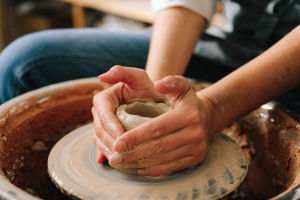Photography is more than clicking a button—it’s about mastering the tools that shape every image. Lykkers who want to elevate their visual storytelling need to understand how ISO works.
Alongside shutter speed and aperture, ISO is a key factor in determining how bright or dark a photo appears. This article breaks down ISO clearly, helping both beginners and enthusiasts make confident decisions in any lighting scenario.
Understanding ISO Basics
What ISO Really Is
ISO refers to a camera setting that amplifies the brightness of an image. It doesn’t add more light, but digitally boosts the captured light, making photos appear brighter in low-light situations.
The Origin of the Term
ISO stands for “International Organization for Standardization.” In photography, this term is used to define how sensitive a digital sensor is to light, following the standards set by ISO in 2019.
Common ISO Values
Most cameras include a standard range of ISO values such as:
- ISO 100 – Low sensitivity
- ISO 200, 400, 800 – Medium sensitivity
- ISO 1600, 3200, 6400 – High sensitivity
Modern devices may offer options reaching ISO 51200 or higher, giving flexibility in darker environments.
Native vs. Extended ISO
Defining Native ISO
Native ISO values are those that your camera handles naturally without artificial adjustments. They provide the best image quality with the least visible grain (commonly known as noise).
What Extended ISO Means
Extended ISO goes beyond the camera's base range by digitally simulating brightness. These values might appear brighter but can introduce more noticeable noise and reduced detail.
Why It Matters
Using native ISO settings ensures better quality. Extended ISO can still be useful, but for best results, it’s often smarter to brighten images in editing rather than rely on these simulated values.
Choosing the Right ISO
Using Low ISO Settings
Ideal for outdoor daylight scenes, low ISO values such as 100 or 200 help produce sharp, clean images. If a tripod is available or there’s no subject motion, lower ISO values maintain detail and color.
When to Use High ISO
In situations like indoor shooting, concerts, or fast action (such as wildlife in motion), faster shutter speeds are needed. To avoid underexposure, increasing ISO helps maintain proper brightness.
Real-World Example
Photographing a bird in flight may require shutter speeds of 1/1000s or faster. Even during the day, this can reduce light intake. Increasing ISO becomes essential to expose the image correctly.
Managing ISO Automatically
Auto ISO Settings
Many modern cameras offer automatic ISO control, adjusting sensitivity based on available light. This is especially helpful when shooting fast-moving subjects or in changing lighting conditions.
Setting ISO Limits
Photographers can usually define a maximum ISO value (e.g., 3200) to avoid too much grain. This ensures image quality stays within acceptable levels, even when the camera takes control.
Improving Quality and Reducing Grain
Lighting First, ISO Second
Always begin by adjusting aperture and shutter speed based on desired depth of field and movement. Then, use ISO to fine-tune exposure. This helps retain detail and minimize unnecessary noise.
Watch Out for False Beliefs
There’s a common misconception that higher ISO values cause more noise. In reality, noise becomes more visible simply because less light reaches the sensor. ISO itself doesn’t create it.
Sensor Limitations
Every camera has a different base ISO and sensor performance. Larger sensors tend to handle higher ISO better, which is why professional models often produce cleaner images in dim settings.
Clearing Common Misunderstandings
Myth: ISO Controls Light Sensitivity
In truth, ISO adjusts how much the camera amplifies the captured light. The actual light intake is governed by the aperture and shutter speed.
Myth: Higher ISO Equals Lower Quality
When used within the native range, higher ISO settings can deliver excellent results. It’s only when pushed too far or into extended ISO that quality may drop noticeably.
Myth: ISO Always Adds Noise
Noise is influenced more by lighting conditions than by ISO levels. A photo taken in bright light at ISO 1600 can appear much cleaner than one in dim light at ISO 400.
In Conclusion
ISO plays a crucial role in capturing well-exposed photographs, especially when lighting conditions are challenging. Lykkers aiming for image excellence should prioritize native ISO values whenever possible, but never hesitate to increase ISO when the shot demands it.
Use aperture and shutter speed creatively, and let ISO work as your flexible ally. By understanding how ISO truly functions, photographers gain greater control over image clarity, mood, and style—unlocking new creative possibilities with every click. Now it’s your turn—grab your camera, experiment with ISO, and share your favorite shots with us! What lighting challenge will you conquer next?


